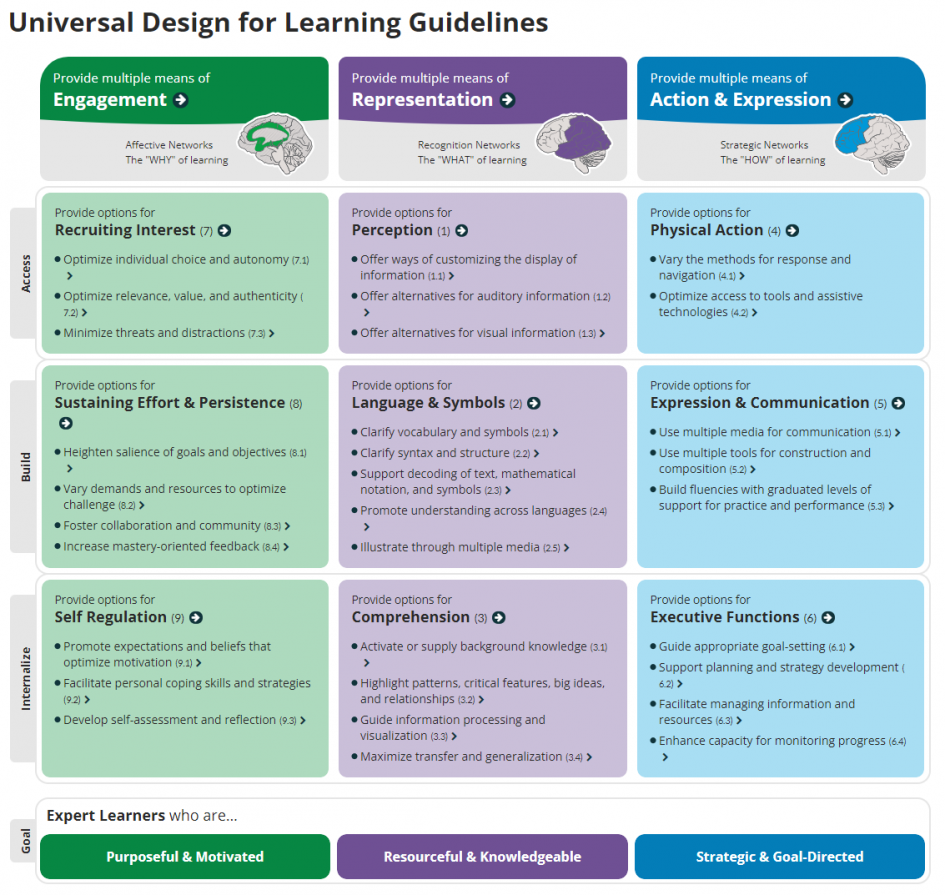UDL Principles
The Universal Design for Learning Principles (UDL) can increase retention in classroom interactions, programs of choice, and school in general.
Everyone should care about UDL
Higher education may have more obvious and immediate feedback through attrition than K12. Yet, both higher education and K12 need to focus on engaging all learners. Universal Design for Learning (UDL) Guidelines (2018) can promote retention at all levels. Dr. McKay stated well “UDL isn’t just for learners considered exceptional,” but instead increases access for all learners (McKay, 2020).
UDL is not just for Online Programs
Students in online and blended programs can maintain motivation and engagement through the use of UDL principles. The principle of multiple meanings of engagement produces learners who are purposeful and motivated. Establishing the “why” of learning with learners can sustain engagement through learning. Developing autonomy is of paramount importance.
Deeper learning structures can occur more naturally to teachers and learners in content with greater consensus (Czerkawski, 2014). Contents of softer sciences may need more refined structured activities and discussions to answer the “why” and offer multiple engagement opportunities.
K12 schools have an opportunity to compare sections or courses which are similar. An obvious study could be to collect attitude surveys from traditional course applications and compare them to UDL versions of the same course.
UDL Principles = Engagement
I located a learner profile based on UDL by Espinosa (2019) that may serve students well as they are in multiple courses and move from year to year in school. Student agency is important to build n learners the more independent their learning becomes.
Instructors considering how to best engage learners can start with sharing the “why” of learning. While some course contents may have a more natural alignment with deeper learning, activating the purpose of the learner and bolstering motivation is always a positive experience. Tools like Espinosa’s can help learners become self-aware and advocate for their learning going forward.
References
Czerkawski, B. C. (2014). Designing deeper learning experiences for online instruction. Journal of Interactive Online Learning, 13(2), 26-40.
Espinosa, A. (2019, September 24). Learner Profiles Lead to Agency and Self-Advocacy in a WI High School. Retrieved January 20, 2020, from https://kathleenmcclaskey.com/tag/udl/.
McKay, C. (Course lecturer). (2020). Identification and Implementation of UDL Guidelines: Module 3; Online and blended learning environments: Part 2. American College of Education. Retrieved from https://www.ace.edu.
The UDL Guidelines. (2018, August 31). Retrieved January 20, 2020, from http://udlguidelines.cast.org.






2 Pingbacks